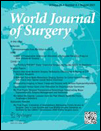Traveling to Receive Treatment for Extremity Soft Tissue Sarcomas: Is it worth the drive?
Supplementary Information: The online version contains supplementary material available at https://doi.org/10.1007/s00268-021-06109-0.
New England surgical society 101st annual meeting-virtual
Abstract
Background
Regionalization of sarcoma care may improve outcomes. Concerns exist regarding the burdens of travel and its effects on care. We evaluate the presence of a “distance bias”.
Methods
Retrospective cohort study of patients with extremity soft tissue sarcoma (stage I-III) within the NCDB. Travel distance (TD) and hospital volume (VOL) were categorized into quartiles. Alternating statistical models were used for analysis.
Results
1,035 hospitals contributed 11,979 cases. Median and maximum VOL were 5 and 45 cases/year. VOL quartiles were “low-volume” (LV) (892 hospitals, < 3 cases/yr.), “intermediate low-volume” (ILV) (89, 3–5 cases/yr.), “intermediate high-volume” (IHV) (39, 6–12 cases/yr.), and “high-volume” (HV) (15, > 12 cases/yr.). TD quartiles: “short-travel” (ST) (< 8 mi), “intermediate-short travel” (IST) (8–17), “intermediate long-travel” (ILT) (18–49), and “long-travel” (LT) (> 50). VOL but not TD is associated with improved survival [HR 0.65 (CI 0.52–0.83)] and rate of R0 resection [1.87 (CI 1.4–2.5)] but has no effect on amputation rates. Matched analyses demonstrate similar results.
Conclusions
Hospital volume but not distance traveled to treatment facility is associated with improved survival and R0 resections for extremity soft tissue sarcomas. Despite the inconveniences of travel, patients may benefit from treatment at high volume centers.





